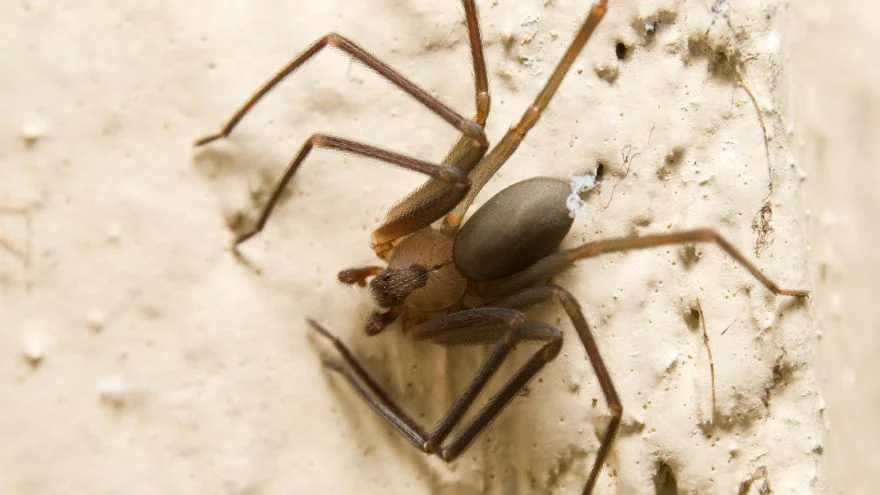Louisiana is home to some of the deadliest and most dangerous animals in the United States. These animals include venomous snakes, the world’s largest-living gator, the deadliest bees, and America’s most venomous spider.
Louisiana is a southeastern U.S. state on the Gulf of Mexico. The state of Texas borders it to the west, Arkansas to the north, Mississippi to the east, and the Gulf of Mexico to the south.
Louisiana provides a favorable habitat for humans and wildlife, from river basin swamps and tidal marshes to chenier woodlands, pine savannas, and coastal prairies. But not all of those animals are friendly.
This article will give insights into 13 of the deadliest and most dangerous animals in Louisiana you should avoid and some wildlife safety tips you need to know.
What are the Most Dangerous Animals in Louisiana?
1. Brown Recluse Spider

- Scientific name: Loxosceles reclusa
- Classification: Arachnid
- Habitat: Woodpiles, sheds, garages, secluded areas
- Diet: Carnivores
- Conservation status: Least concern
The brown recluse is also known as violin or fiddle-back spider because of the violin-shaped markings on the top front section of its body.
The fiddle-back spider is one of North America’s most feared venomous arachnids.
One interesting fact about the recluse is that it can cut off a limb to escape a predator or even hinder venom from spreading through its body.
The violin spiders are not hostile, regardless of what you might have heard.
They prefer to weave their webs in discrete areas of the house like dusty shelves, seldom worn shoes and clothes to avoid disturbance from people.
The recluse’s toxin contains a rare protein cell-killer that destroys cell membranes, leading to tissue death in the affected bite area.
The fiddle-backs are hardly aggressive, and their first instinct is to flee when disturbed or play dead and only attack when they are disturbed or feel threatened.
Its bite contains two toxic venoms (necrotic and hemotoxic venom), which, when injected into the bloodstream, cause skin rot.
The symptom of its bite is a painful itching sore that rots and takes months to regenerate.
2. Louisiana Black Bear

- Scientific name: Ursus americanus luteolus
- Classification: Mammal
- Habitat: Forest, woodlands
- Diet: Omnivore
- Conservation status: Least concern
The Louisiana black bear is the state’s recognized animal and can only be found in Louisiana, Texas, and Mississippi.
They are possibly the inspiration for the original teddy bear’s production and sales nationwide.
They are intelligent, very fast with a speed of about 30 miles per hour, and have an incredible strength that can kill a human with one blow.
Although carnivores, they feed mostly on a vegetarian diet. Black bears are generally not dangerous to humans, rarely attack when approached, and only make false charges.
Most attacks on humans are influenced by hunger rather than protecting territories, which means these bears are weak and sometimes get scared easily.
These bears were considered endangered until 2016, and since then, hunting laws have been enacted to protect them from extinction.
3. American Alligator
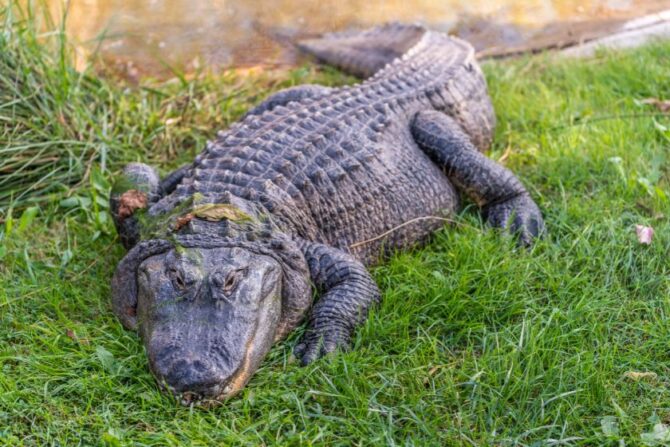
- Scientific name: Alligator mississippiensis
- Classification: Reptile
- Habitat: Marsh, swamplands
- Diet: Carnivore
- Conservation status: Least concern
Louisiana’s American alligator, also known as the gator, is the world’s largest gator. The gator grows up to 15 ft in length and can weigh about 1,300 pounds, with over 2 million American alligators living in the U.S.
Alligators have multiple stomachs; the first part of their stomach grinds up food, while the second part is highly acidic and helps in digestion.
The main threat is their bite, one of the most powerful and deadliest in the world.
Once a gator bites its prey with its razor-sharp teeth that can cut through flesh easily, the odds of being released are almost zero, and death from drowning as its prey gets dragged into the water is the usual outcome.
Unlike large crocodiles, gators do not take humans upon sighting as prey but will strike in self-defense if threatened.
Although gators rarely attack humans, they will attack if their territory is bridged and they feel threatened or cornered.
Their common prey includes domestic animals and sometimes livestock when in the human habitat.
4. Eastern Diamondback Rattlesnake
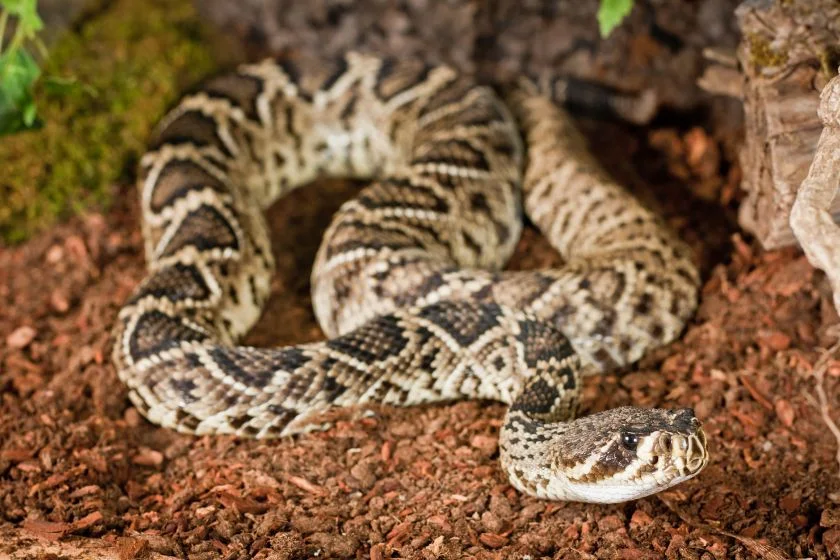
- Scientific name: Crotalusad amanteus
- Classification: Reptile
- Habitat: Meadows, grasslands, rock hills, swamplands
- Diet: Omnivore
- Conservation status: Vulnerable
The Eastern diamondback rattlesnake is one of the biggest, measuring up to 6ft, and the heaviest rattlesnake, measuring up to 10lb in America, getting its name from the dark patterns on its back.
These patterns are like dark diamonds with faded-colored borders and brown centers.
The eastern diamondback is fitted with huge venomous glands and long fangs that pump up to 450 mg of toxic venom into the bloodstream, making it one of the most dangerous snakes for bites.
The venom contains toxins that kill red blood cells and lead to cardiac arrest.
Survivors described the bite as having two hot needles piercing through the skin, and internal and physical pain was out of this world.
However, studies have also discovered that these snakes’ venom varies depending on their location.
The eastern diamondback rattlesnake can be aggressive if threatened and will most certainly strike at will. Due to their hostility, they have been responsible for up to 5 deaths yearly.
5. Diamondback Rattlesnake

- Scientific name: Crotalus atrox
- Classification: Reptile
- Habitat: Under vegetation, rocks, debris
- Diet: Carnivore
- Conservation status: Least concern
The Western Diamondback is one of the most notorious snakes in the United States. These well-known Louisiana snakes are members of the Pit Viper family.
They have a special detector on both sides of its head that detects heat, giving them a thermal image of everything around them.
Also, you can sense their presence by listening to snakes’ rattling sounds when they are very close.
These snakes are not hostile and won’t start chasing you unnecessarily; however, they hold their ground when cornered. They don’t always give rattling sounds; they sometimes stay silent and hidden.
They are a little more agitated than any other snake and will bite at any given opportunity. Although, they will be happy to get out of your way if you back away and give them their space.
6. Eastern Coral Snake (Harlequin Snake)

- Scientific name: Micrurus fulvius
- Classification: Reptile
- Habitat: Grasslands, rock piles
- Diet: Carnivore
- Conservation status: Least concern
The harlequin coral snakes are slim and jewel-toned, sometimes considered the American cobra, and are one of the most beautiful animals in the United States.
They also have one of the most paralyzing neurotoxic venoms in America. Although they possess enough toxins to kill up to five fully grown adults, they cannot administer a full amount with just one strike.
With their reputation as one of the deadliest snakes, the good news is that they prefer to stay hidden and only bite when provoked to the extreme.
When the coral snake bites its prey, the venom first paralyzes the system of its victim and then kills it. However, death from a harlequin snake’s bite is very scarce in the U.S.
7. Copperhead Snake
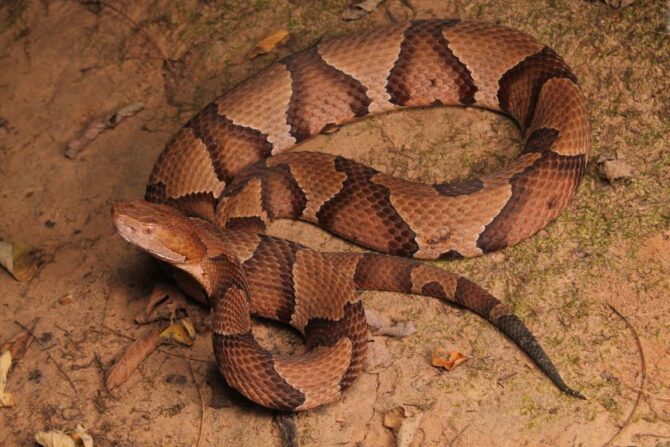
- Scientific name: Agkistrodon contortrix
- Classification: Reptile
- Habitat: Logs, stomps, caves, foundation buildings.
- Diet: Carnivore
- Conservation status: Least concern
The Eastern copperhead is an attractive but lethal snake that has caused more deaths than any other snake in the United States.
When threatened, copperheads will hide from plain sight, being a master of disguise to escape detection.
Unfortunately, its ability to disguise makes it easier for unaware humans to step on it, leading to provocation.
The copperhead is special because its first bite has no venom, but if it feels provoked, it becomes vicious.
When it bites, it releases very little venom into the bloodstream; although it’s painful, it’s hardly lethal to humans.
8. Africanized Killer Bees
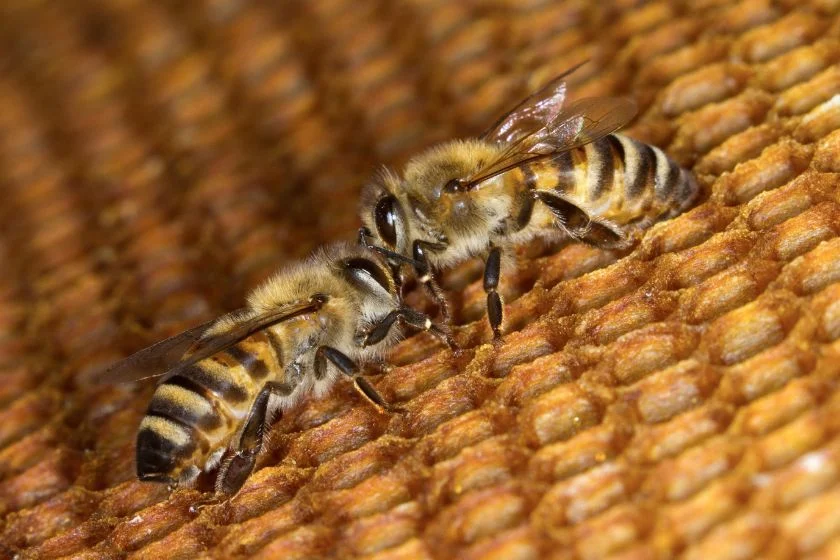
- Scientific name: Apis mellifera scutellata
- Classification: Insect
- Habitat: Hives
- Diet: Herbivores
- Conservation status: Least concern
In 1957, the Brazilian government employed a biologist to create a fresh breed of honeybee that is not lazy in the summers. He came across the idea of inter-breeding the existing bees with some agile and aggressive bees from Africa.
One day, a visitor accidentally removed the glass separating the queen bees from the worker bees and began a new breed of bees spreading like wildfire and infesting the north. They soon became popular as killer bees.
Their venom is no more potent than any other bee; it will take up to 1,000 stings for the venom to become deadly.
However, they pose a threat to humans because every bee comes out to defend its colony, and they can range from 6000 to 15000 bees.
If they see a person as a threat, they will pursue for up to a quarter of a mile, stinging continually.
Once bothered, a colony can remain angered for 24 hours, attacking anything and anyone near their hive.
9. Water Moccasin (Cottonmouth)

- Scientific name: Agkistrodon piscivorus
- Classification: Reptile
- Habitat: Swamps, marshes, drainage
- Diet: Carnivore
- Conservation status: Least concern
Water Moccasins, also known as the cottonmouth, live on land and in water, making them dangerous terrors of Louisiana’s water.
It is almost difficult to see these master divers as they mostly travel on top of the water, and when submerged, they become killer reptile submarines.
These dangerous but deadly snakes are usually found in and around water, so be careful when you are at the lakeside swimming areas or near boating docks.
Most people are scared of the moccasins’ fearsome reputation, pictured as aggressive snakes that will pursue and bite. However, they only bite when stepped on or threatened.
The moccasins are very dangerous because of their potent venom, which can be lethal if not attended to quickly.
Symptoms of a water moccasin bite include:
- Shock
- The skin color of the affected area changes
- Difficulty in breathing
- Swelling
- Intense pain
- Change in heart rate
- Rusty taste in the mouth
- Numbness in mouth, feet, scalp, tongue, etc.
- Death
It is essential to seek medical attention if bitten by a moccasin because toxins in its venom can cause a breakdown of the bodily system due to blood pressure.
10. Buck Moth Caterpillar
- Scientific name: Hemileuca maia
- Classification: Insects
- Habitat: Woodlands
- Diet: Herbivore
- Conservation status: Vulnerable
These small, insignificant, often overlooked creatures can be a terror to behold as one of the deadliest creatures in Louisiana.
Every spring, buck moth eggs hatch and release these cute little beasts into the environment.
The Buck Moth Caterpillars are covered with spines filled with potent toxins; one touch and the rest is history.
11. Scorpion
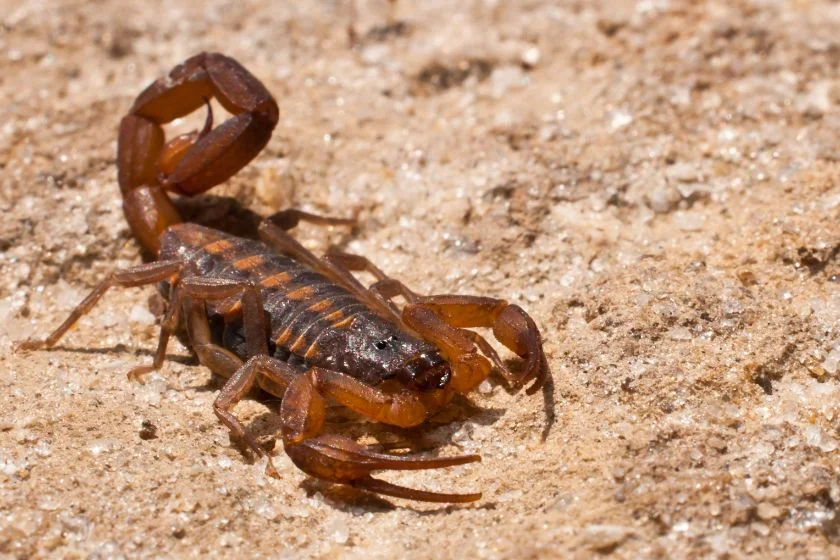
- Scientific name: Scorpions
- Classification: Arthropod
- Habitat: Desert, grassland, savanna, tropical jungles
- Diet: Carnivore
- Conservation status: Least concern
Louisiana is home to just two different species of scorpions; the striped bark scorpion and southern devil scorpion.
Though not deadly, a sting from these arthropods can cause an excruciating feeling and, most times, cause severe allergic reactions and hospitalization.
12. Bull Sharks
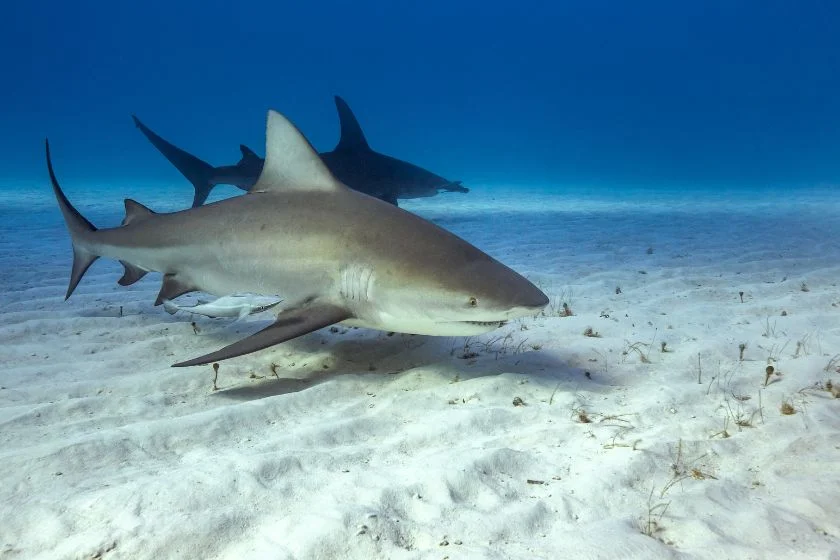
- Scientific name: Carcharhinus leucas
- Classification: Fish
- Habitat: Swallows, tropical waters, fresh water
- Diet: Carnivore
- Conservation status: Least concern
The bull shark’s name came from how they hunt their prey, head-diving into their prey to knock them down. As a result, they are referred to as bull sharks.
The bull shark is one of the most feared and well-known apex predators. There have been reports of several shark sightings in Louisiana.
According to the National Wildlife Federation, the bull shark is among the most dangerous aquatic animals because of their aggression, which leads them to attack humans.
The bull shark has been responsible for several attacks on various rivers and lakes in Louisiana.
From the 1914 confirmed fatality when a Turkish professional swimmer performed in front of a large crowd at Lake Pontchartrain, to several reported bull shark bites—the list is vast.
13. Fire Ants
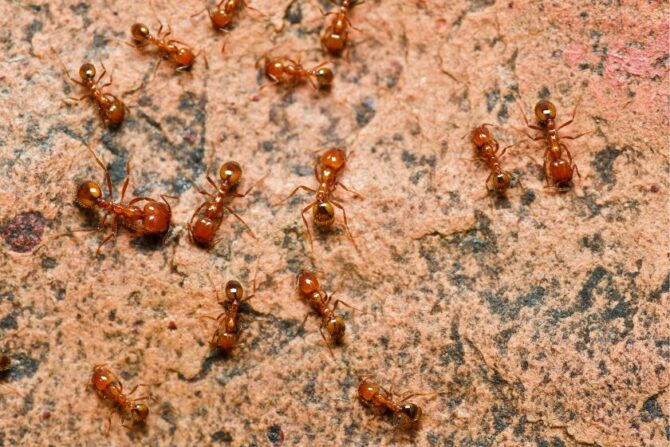
- Scientific name: Solenopsis
- Classification: Insect
- Habitat: Mellow, pasture, park, lawn
- Diet: Omnivore
- Conservation status: Least concern
Fire ants, like most ants, are very coordinated but aggressive and tend to move in large numbers.
Multiple stings from them can kill a small animal, and their venom is potent enough to cause an allergic response in humans and, in some cases, can cause a person to go into anaphylactic shock.
These creatures are most rampant during the summertime.
Louisiana Wildlife Safety Tips
There are rules to everything, and wildlife in Louisiana comes with boundaries, both for your safety and the safety of these animals.
Ensure that you strictly adhere to all these guidelines.
- Never feed the animals: It can be tempting to feed the local wildlife, but you will do more harm than good when you feed wildlife. Those animals will see you as a potential food source and automatically become aggressive when you have nothing to offer them.
- Keep food secure while camping: Wash cooking wares thoroughly after every meal and store leftover foods or snacks in an airtight container. Failure to do so will attract wildlife.
- Carry bear mace and be watchful: Watch for signs of predators’ activity such as fresh paw prints, animal noise, fresh kills, etc. While walking, try and be noisy as animals tend to shy away from human presence.
- Never go hiking alone: Always travel in groups, especially when camping in the wild. Because wild animals will prey on the innocent and lonely, but if in a group, they would be scared to come close.
- Avoid hiking when it’s dark: Many predators are nocturnal and are active more at night because their prey is either asleep or can’t see in the dark. And if at all the sun goes down on you when in the wild, carry a good source of light as it scares predators away.
- Always keep a distance of about 50 yards from these animals: Animals always feel threatened when approached, especially by humans. So it is crucial to stay away from them as far as possible to avoid triggering an attack.
Conclusion
Exploring the wildlife in Louisiana is nice but understand that you have to respect the nature of these creatures.
They love their habitats, and their presence help to create a balance in nature. Please do not disturb them or roam carelessly in their territory.
Just let them be, and you will enjoy the best of nature without worrying about being attacked by these most dangerous animals in Louisiana.
